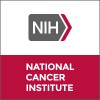
UFUR Plus Thalidomide for Advanced Hepatocellular Carcinoma
Hepatocellular CarcinomaWe hypothesize that combination of tegafur/uracil(UFUR) and thalidomide, both of which have been shown to be active in some HCC patients,may be a highly useful regimen for the treatment of advanced HCC. There are several rationales underlying this combination. First, anti-angiogenesis therapy may improve the efficacy of chemotherapy by normalizing the abnormal vasculature in tumors, and thus improving the delivery of chemotherapeutic agents to the tumor cells. Second, chemotherapeutic drugs given in a low-dose, un interrupted, and protracted way can induce anti-tumor effect through the anti-angiogenesis activity (so-called"metronomic chemotherapy"). The efficacy of metronomic chemotherapy can be suppressed by VEGF/VEGFR signaling pathways and thus can bo further potentiated by agents blocking those survival signals of endothelial cell. In this regard, tegafur/uracil appears to be a good candidate for metronomic chemotherapy because tegafur/uracil and its metabolites bave already been shown to inhibit angiogenesis in several pre-clinical models.

Chemotherapy or Not, Following Complete Treatment of Hepatic Cancer in Cirrhotic Patients
Liver NeoplasmsLiver Cirrhosis5 moreBesides liver transplantation, the curative treatment of primary hepatic cancer with cirrhosis remains the surgical resection. Radiofrequency or cryotherapy currently allow local ablation of small cancer, with very good results. However, all these treatments are followed by high rates of recurrence (50 - 70% at 5 years). Then, it seems essential to associate to the surgical resection or to the local ablation as "adjuvant" treatment, in order to prevent or to decrease the rate of recurrence. However, no evidence supports this attitude. Therefore, following curative treatment of primary hepatic cancer with cirrhosis, we propose to compare treated to untreated patients. Postoperative treatment means either intra-arterial chemotherapy or systemic chemotherapy. The main criterion of the study is time of survival without recurrence. The main secondary objective is the safety.

Laser Interstitial Thermal Therapy Under "Real Time" MRI Guidance for "Minimal Invasive" Treatment...
CarcinomaHepatocellular2 moreThe purpose of this study is to determine if the, MR guided, laser interstitial thermal therapy (LITT) treatment technique can be safety and efficiently used for the human liver metastasis

GH, IGF-I and Somatostatin Analogues in Hepatocellular Carcinoma
Advanced Hepatocellular CarcinomaThe hepatocellular carcinoma (HCC) represents more than 5% of all human malignancies, with more than 500,000 deaths per year (1). In Campania region, mortality for HCC is 2 times higher than in the rest of Italy because of a higher locally prevalence of hepatitis-C virus infection. Development of HCC in liver cirrhosis is associated with increased DNA synthesis and regeneration of hepatocytes (2). Hepatocyte growth factor, the transforming growth factor-α, the fibroblast growth factor are well studied (3,4) while the insulin-like growth factor system (IGF-I, IGF-II and their binding proteins) has been less investigated. IGF-I and IGF-II modulate growth, metabolism and cell differentiation and have specific receptors in the liver (5). IGF-I levels in the upper normal range have been associated with an increased risk to develop prostate cancer (6), breast cancer (7) and colon cancer (8). Some data report increased expression of IGF-II in HCC (9,10) and others suggest a role of increased IGF-I bioavailability in HCC (11). We reported increased IGF-I/IGFBP-3 ratio in patients with HCC compared with those with cirrhosis with a similar liver function, so suggesting increased IGF-I bioavailability in HCC (12). There is no currently medical treatment for patients with advanced HCC which has a very poor prognosis (survival <6 months). Because of limited liver function, classical chemotherapy cannot be applied (13). In patients with HCC without cirrhosis, surgery is possible only in 5% while in those with cirrhosis first-line treatment is still questioned as survival is <50% three years after operation. Patients suitable for local resection of HCC are only those with Child-Pugh's "hyper A" liver function class, who are a minority (14-16). Percutaneous resection treatments may treat approximately 70%-90% of tumors with maximal diameters of <3 cm (15,17-19). Somatostatin analogues are indicated in patients with neuroendocrine tumors expressing somatostatin receptors type 2 and 5 and has excellent safety profile. In advanced HCC, some studies demonstrated beneficial effects (20,21) while some others did not (22,23). Only a few data are available on somatostatin receptor expression in HCC (24,25). Somatostatin analogues have also a clear-cut inhibitory effect on circulating IGF-I levels with a potential additional effect in delaying HCC progression.

Dasatinib in Treating Patients With Solid Tumors or Lymphomas That Are Metastatic or Cannot Be Removed...
Adult Acute Lymphoblastic Leukemia in RemissionAdult B Acute Lymphoblastic Leukemia83 moreThis phase I trial studies the side effects and best dose of dasatinib in treating patients with solid tumors or lymphomas that are metastatic or cannot be removed by surgery. Dasatinib may stop the growth of tumor cells by blocking some of the enzymes needed for cell growth.

Study of Cytokine-induced Killer Cell (CIK) Treatment in Patients After Resection of Liver Cancer...
Hepatocellular CarcinomaStudy hypothesis: The recurrence rate of HCC patients after radical resection is about 60-70%. This study is based on the hypothesis that CIK treatment could decrease the recurrence rate by 15% to 20%. Abstract: This is a randomized controlled study. About 200 patients with hepatocellular carcinoma who underwent radical resection will be included. The patients will be randomized to group A (receive CIK treatment) or group B (just regularly follow up) without any anti-cancer treatment after resection of HCC, and the randomize ratio will be 1:1. Study treatment: Patients in group A will receive 4 cycles of CIK treatments within 3 months after their liver resection. Patients in group B will have no anti-cancer therapy. Anti-virus and other supportive therapies are available in both groups.

Peginterferon Plus Ribavirin for Hepatitis C Patients Concomitant With Malignancy Other Than Hepatocellular...
Chronic Hepatitis CNeoplasmsCombination therapy with pegylated interferon-alpha plus ribavirin has greatly improved the treatment efficacy and is the mainstream of treatment for chronic hepatitis C infection. The efficacy and safety of pegylated interferon-alpha plus ribavirin combination therapy and its impact on the outcome in chronic hepatitis C patients concomitant with malignancy other than hepatocellular carcinoma deserve to be elucidated. The purposes of this study are: To evaluate the efficacy and safety of pegylated interferon-alpha 2a plus ribavirin combination therapy in chronic hepatitis C patients concomitant with malignancy other than hepatocellular carcinoma, compare to those without systemic malignancy. To investigate the role of baseline and on-treatment factors on the response to pegylated interferon-alpha 2a plus ribavirin combination therapy in chronic hepatitis C patients concomitant with malignancy other than hepatocellular carcinoma.

Sorafenib Therapy Prior to Radiofrequency Ablation for Intermediate Sized Hepatocellular Cancer...
Hepatocellular CancerThe purpose of this research study is to determine if sorafenib improves the effectiveness of a procedure called radiofrequency ablation (RFA) for the treatment of hepatocellular cancer (HCC). Radiofrequency ablation has been used to treat many types of tumors, including hepatocellular cancers. During RFA a needle is inserted into the tumor tissue and heat is used to kill the tumor cells. Sorafenib has been approved by the FDA for the treatment of hepatocellular cancer that cannot be treated with surgery. Pre-clinical data suggests that sorafenib may improve the efficacy of RFA.

Effect of I/R Injuries by Pringle Manoeuvre on the Prognosis of HCC Patients After Curative Hepatectomy...
Hepatocellular CarcinomaThis is a multi-centre prospective randomized controlled trial to explore the influence of ischemia-reperfusion injuries elicited by pringle manoeuvre during radical excision on the prognosis of Hepatocellular Carcinoma (HCC) patients.

Treatment of Unresectable Hepatocellular Cancer With Opioid Growth Factor
Hepatocellular CancerHepatocellular cancer, one of the world's most deadly tumors, is associated with chronic liver injury and cirrhosis. With the increasing occurrence of viral hepatitis, the incidence of this cancer in the United States continues to rise. Surgical resection offers the only hope for cure; but sadly, few patients are candidates for surgery due to their liver disease. Liver transplant can be an effective treatment, but due to a scarcity of organs, most patients do not qualify for this therapy either. Patients who are not candidates for these procedures have very few therapeutic options as chemotherapy and radiation have little efficacy. New therapies are desperately needed. Opioid Growth Factor (OGF) inhibits the growth of a number of cancer lines in vitro by a receptor-mediated mechanism. In pancreatic cancer this phenomenon has been well defined not only in vitro but in animal models. Based upon these findings, a phase I trial has been conducted demonstrating that OGF can be administered safely to patients with pancreatic cancer. The investigators hypothesize that administration of OGF will inhibit the course of cancer progression in human subjects with unresectable hepatocellular cancer and cirrhosis. As a first step in testing this hypothesis, the investigators propose a phase I trial to study the toxicity and pharmacokinetics of this therapy in patients suffering from inoperable hepatocellular cancer and cirrhosis.
